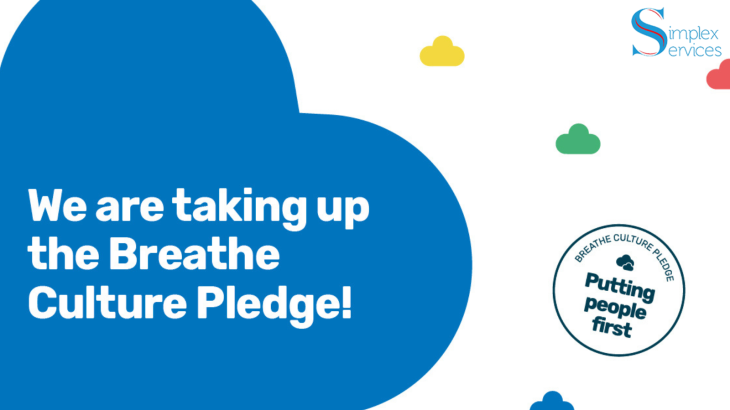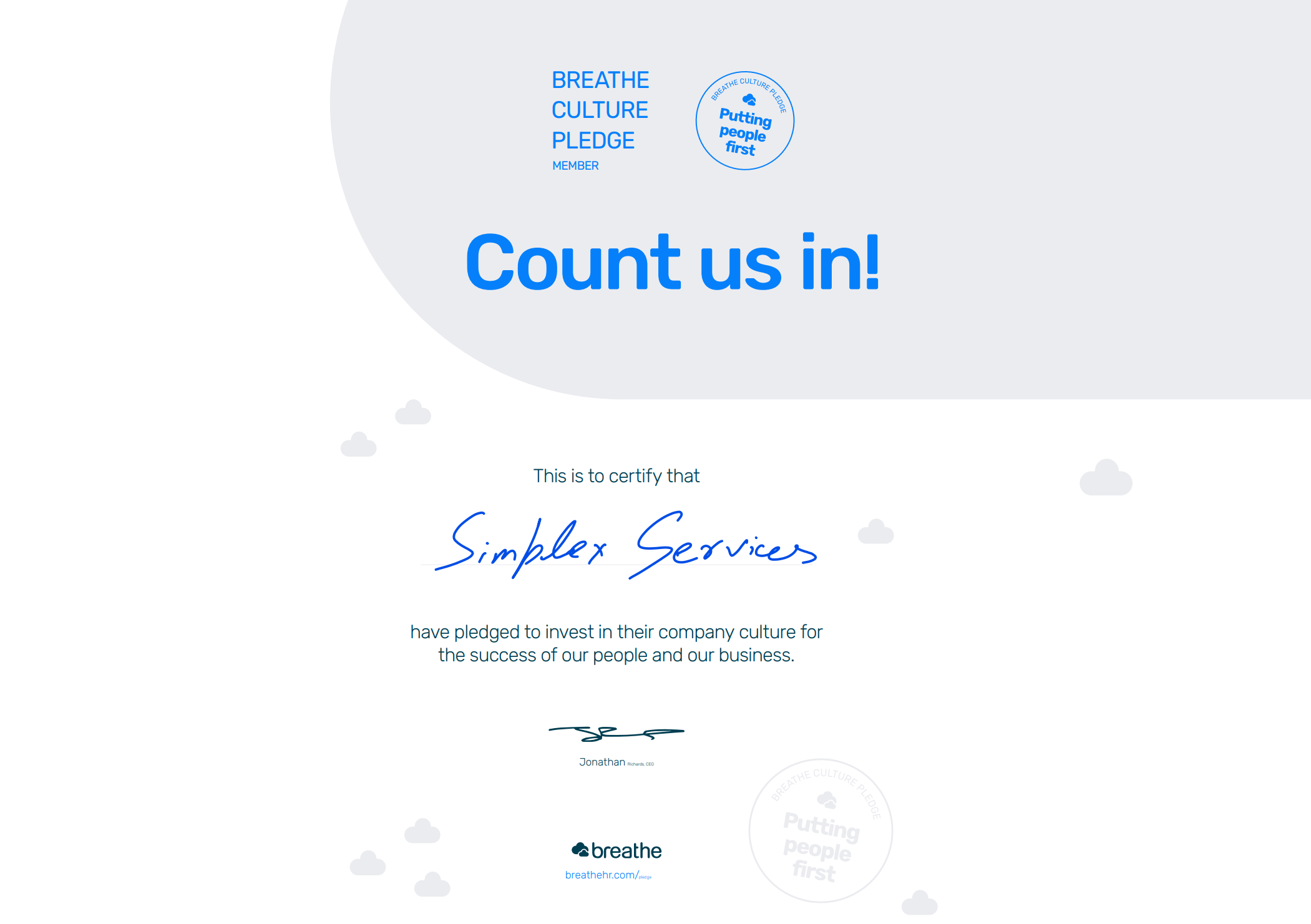At Simplex, we understand that taking culture seriously is vital for creating a thriving business. Workplace culture is an essential aspect of business strategy and key to creating an inclusive, progressive environment which supports employees and recognises their achievements. A 2018 research revealed that poor company culture cost the UK economy more than £23.6 billion.
Here are a few practical steps for small businesses to develop a positive workplace culture. These steps will provide a robust foundation for future development and should shape the objectives behind an investment in cultural development.
Where are you today?
Start with basic metrics like employee absences, retention and turnover. What patterns can you see in the data, how do different business functions and teams compare? How do they compare to your industry norms? What additional insights have you gathered from exit or return-to-work interviews? If you don’t have the data, then begin with collecting it.
Where are the gaps?
You may have run employee surveys. How satisfied are you with that process and what have you learnt from the outputs? Have you got an engagement metric? What sort of response rate, or quality of response have you seen? What gaps can you see in your understanding of your business culture? How will you go about filling those gaps? What about diversity, are you capturing the experience of different employee segments (age, disability, ethnicity and gender)?
What is your role?
Take a step back and consider your own role in the workplace. Can you identify how much time you spend working on HR administration? What about time spent in talking to the business as a whole? How much time spent in 1-2-1 conversations with staff? What about day-to-day visibility? Can you see patterns in who you speak to and spend time with – and who you don’t? How often do you talk about behaviour, standards and values (and to whom)?
What is your culture?
Using some of the material provided in this report to inform your approach, try to write down your view of the company culture. Think carefully about your own underlying assumptions. What is your vision for the business? Can you identify a purpose – beyond profit – for your business? Think about what different internal groups would say about the company culture. What emotional hooks can you identify that differentiate your business?
What is the market saying?
What evidence do you have about the relationship between culture and your business performance? What are customer satisfaction scores (or informal feedback) telling you? How healthy is your customer loyalty, retention or lifetime value growth? Can you start to map internal data points against these market metrics – e.g. employee engagement and customer satisfaction?
What does your productivity look like?
What metrics are you using to capture your productivity performance? How effective are these metrics? What are the figures telling you? How does this compare to industry norms? Can you identify where, when and how process efficiencies have taken place? What about new product development and innovation? Examine how that happens within your business today.
Audit your processes
Where and how could you save time or automate administrative processes? Where and how could you better capture or deliver market and employee feedback and recognition? What about your employees – are there gaps in their use of digital channels? Are there skill or confidence gaps to be addressed? Are you engaging effectively with your customers and prospects through digital channels?
How healthy is your learning culture?
What evidence do you have for the level of professional and personal development within the organisation? Do you set aside budget for training and education and how effective are the outcomes? Do you operate a mentor system within the organisation? Do you bring in external speakers to educate and inspire? How is learning positioned in the organisation? Is the management team training in coaching?
Map out all aspects of the employee package
To be successful with culture, and to overcome cynicism, you should anticipate drivers of negativity including (real) earnings, levels of income and employment security, the benefits package provided including health and wellbeing components, annual leave, discretionary bonuses and rewards, flexible and home working opportunities, onsite facilities including food, drink, communal dining and flexible working spaces.
Bring in the team
So, you have prepared the evidence, you have identified gaps in knowledge, you have a clear idea of your objectives and key metrics, you have developed your awareness of the company culture. You are ready to engage the business in moving things forward. You will need to build a cross- functional team to drive the programme forward and to ensure that they are allowed the time to do so. Put a roadmap together with clear landmarks and timelines to share with all people in the business. Remain visible and involved in all aspects of the programme.
We are also proud to share that we are taking the Breathe Culture Pledge, joining a growing movement of businesses committing towards investing in our company culture to super-charge employee engagement and propel the businesses forward. The above points are, in fact, guidelines for the same. Our people are key to our success and by creating a progressive, supportive and inclusive culture we can help them grow and thrive.
The pledge is an initiative by Breathe, a Sussex-based company which offers cloud-based HR software for small and medium businesses. According to Jonathan Richards, CEO of Breathe, small businesses make a huge contribution to the UK economy and those who actively invest in their company culture are also making a positive difference to people’s lives.

